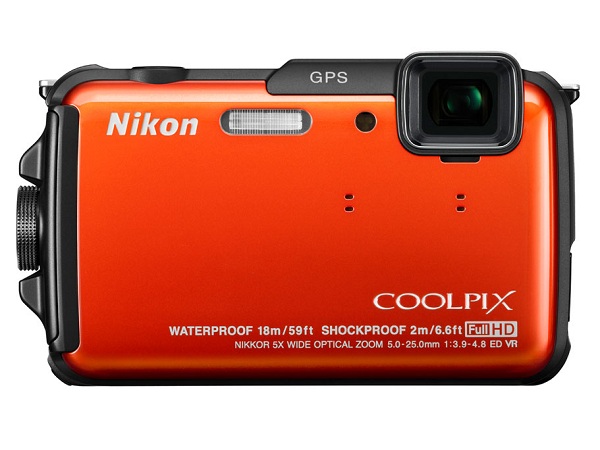

- WIRELESS MOBILE UTILITY NIKON FULL IMAGE ANDROID
- WIRELESS MOBILE UTILITY NIKON FULL IMAGE ISO
- WIRELESS MOBILE UTILITY NIKON FULL IMAGE PLUS
- WIRELESS MOBILE UTILITY NIKON FULL IMAGE SERIES
- WIRELESS MOBILE UTILITY NIKON FULL IMAGE DOWNLOAD
Your high resolution camera creates large files and you probably won’t want to shoot using the maximum resolution of the camera if you’re planning on sending images to a smart device using Wi-Fi. The app is free and can be found on the iTunes Online Store® and the Google Play™ Store for Android™ devices.

Images can be uploaded to a compatible smart device that has the Nikon Wireless Mobile Utility (WMU) app installed. Nikon digital cameras also utilise great NIKKOR lenses, as well as many features and accessories that allow you to be creative with your photography. The camera’s sensor is designed to give you a higher resolution, wider dynamic range, and the ability to shoot in low light and use high ISOs-all of which allow for the generation of high quality images. This is because digital cameras utilise larger image sensors, and powerful image processing engines. The camera and your smart device create the connection.Īlthough your smartphone probably has the capability of shooting photos, your Nikon digital camera can likely take better photos. And a great feature of Nikon cameras that feature Wi-Fi connect-ability is that you don't need to be at a Wi-Fi hotspot. A workaround to make up for the lack of GPS is to add the location data of your smart device to images when they’re uploaded, but this does not offer the same functionality as the old GPS module of the earlier camera.Select Nikon DSLRs and COOLPIX have Wi-Fi® built-in so you can seamlessly transfer images from your Wi-Fi camera to your compatible smartphone or tablet device for easy sharing.
WIRELESS MOBILE UTILITY NIKON FULL IMAGE DOWNLOAD
From there, users can share images online, download them to their devices and also wirelessly control their cameras.

WIRELESS MOBILE UTILITY NIKON FULL IMAGE ANDROID
Thankfully, the Wi-Fi connectivity is very good, allowing users to connect to the camera from a smart device using the free Nikon Wireless Mobile Utility app – available for both Android and iOS. This is somewhat disappointing, though for many users it is a feature that goes largely unused. Instead a GP-1A GPS module will need to be purchased separately (£189) for those users wishing to geotag images. The D5300 introduced built-in Wi-Fi and GPS connectivity to the series, but while the new D5500 retains Wi-Fi, GPS has been removed.
WIRELESS MOBILE UTILITY NIKON FULL IMAGE ISO
Perhaps Nikon is hinting at better in-camera processing by featuring the very same ISO sensitivity range on the D5500, though now ISO 100-25,600 is all native, rather than including a special expanded setting.
WIRELESS MOBILE UTILITY NIKON FULL IMAGE PLUS
The D5300 has a native ISO sensitivity spanning ISO 100-12,800, plus an expanded H1 setting equivalent to ISO 25,600. This could mean marginally better colour accuracy and potentially faster autofocus. Though it is likely that, as a new camera, there has been tweaks made to some algorithms to achieve better in-camera noise reduction in JPEG images, as well as more advanced calculations obtained from the 2016-pixel RGB colour sensor. It features the same Expeed 4 processor as the D5300, and the same 5fps shooting speed as boasted by the D5300 and D5200.
WIRELESS MOBILE UTILITY NIKON FULL IMAGE SERIES
Previous entries in the D5000 series have seen upgrades made to the processor, but the D5500 doesn’t follow suit. Also, it’s worth noting that it’s possible to remove a lot of moiré in post-production should it occur. Nikon says that it feels the advantages of the added detail captured outweigh the disadvantages of potential moiré patterning. However, the removal of this filter means that images from the D5500 can be affected by moiré patterning, which occurs when shooting recurring patterns such as pinstriped shirts and other similar designs. Like the D5300, the D5500 has no optical low-pass (anti-aliasing) filter, which should in turn allow its sensor to resolve a high level of detail. With a resolution of 24.2 million pixels, it is the same resolution and size as the Nikon D5500’s predecessor, the D5300. The Nikon D5500 features a tilting LCD touchscreenĪ DX-format sensor with dimensions of 15.6 x 23.5mm sits inside the Nikon D5500.


 0 kommentar(er)
0 kommentar(er)
